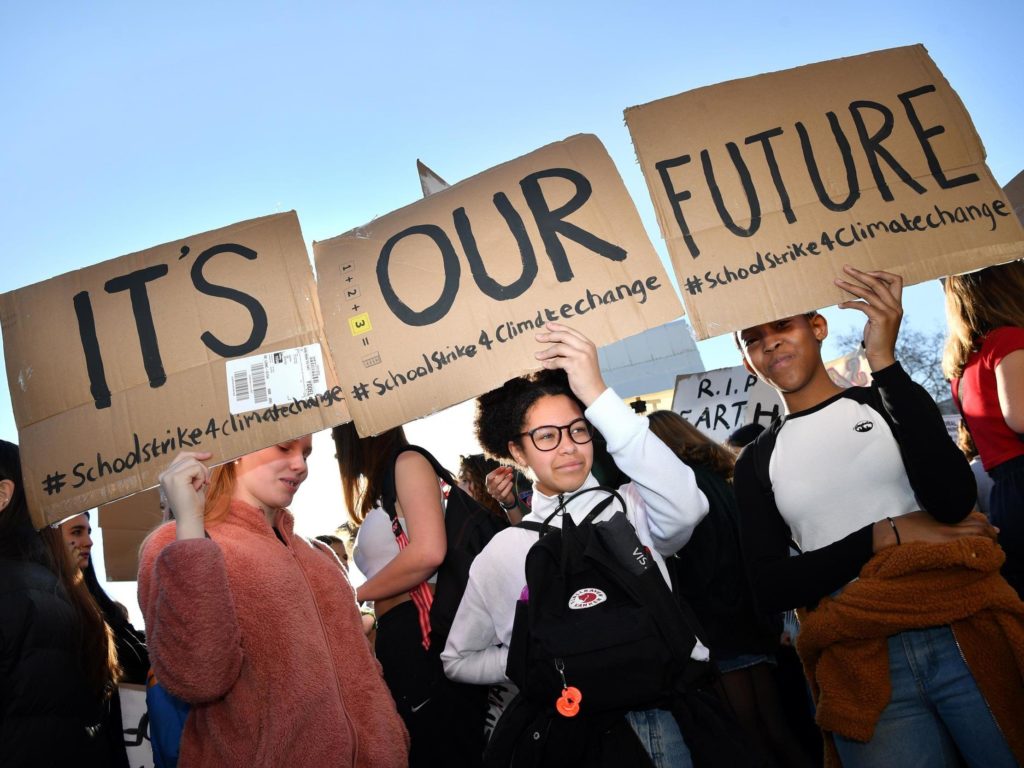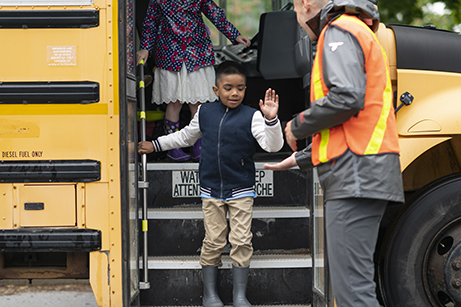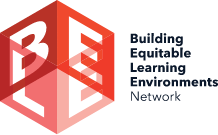COVID-19 has both exacerbated and exposed the deep inequities in our education system. The path we choose to “recovery” can replace practices, policies and structures that marginalized and denied opportunity to many students with others that will enable all students to thrive.
The American Rescue Plan Act of 2021 (ARP) provides $123 billion of K-12 education funds to states and districts to support COVID-19 recovery and reopening efforts. In partnership with students, families and educators, state and district leaders can use ARP funds to meet the immediate needs, particularly for BIPOC students and communities that are least well served by the current system, and to take steps to ensure systems reliably produce healthy equitable outcomes, regardless of race or any other social or cultural marker.
The BELE Network understands that EQUITY is a noun and verb.
- Equity is achieved when educational systems ensure that every child has what they need – when they need it – to thrive socially, emotionally and academically.
- Educational equity is attained when every young person’s experience, wellbeing, and academic success are considered in the design of learning environments and patterns of success or failure are no longer predicted by race or any other social or cultural marker.
Don’t just fill the holes.
Plant seeds.

The “Essential Actions” outlined below describe the processes (”how”) to make changes necessary (“what”) to realize the systemic transformation needed to create resilient school systems that foster the academic, social, and emotional growth of all young people and their communities. Both the Essential Actions and BELE Framework are grounded in the four key pillars that guide BELE’s work:
- Equity & Justice through Targeted Universalism
- Science of Learning and Development
- Centering Student Experience
- Collaborative Inquiry and Liberatory Co-Design
These essential actions to realizing systemic transformation can serve as a guide for the use of ARP funds to plant the seeds for more equitable education experiences and outcomes in the long-term.
Essential Actions
Essential Action 1: Redesign Teaching & Learning to Transform Students’ Daily Experience

Create learning experiences that prioritize trusting relationships; support an integrated approach to students’ cognitive, academic, social, emotional, and identity development; foster critical consciousness and provide opportunities for student agency
Use of Funds:
- Invest in more culturally-affirming curricula, textbooks/materials, and related professional development
- Invest in project-based curricula, professional development, and enrichment resources to shift to pedagogical approaches that support inquiry and problem-based learning around rich, relevant tasks that are culturally connected and collaboratively pursued
- Invest in additional teachers, mentors, counselors, student success coaches, high-dosage tutoring, etc. to accelerate recovery by increasing people power in ways that provide for new relationship-centered staffing
- Invest in professional development and other needed capacities to shift to “discipline” policies that are restorative, empathic, student-centered, and developmental, and that eliminate harmful practices such as the surveillance, policing, and exclusion of students from their school community
Case Studies
Dolore magna aliquyam diam nonumy ermod
Dolore magna aliquyam diam nonumy ermod
Dolore magna aliquyam diam nonumy ermod
Learn More
Confronting New and Persistent Equity Challenges | The BELE Network →
Empathy Techniques for Educational Equity | Stanford’s d.School →
Five actions for teaching for an antiracist future | ACSD →
Tools to help understand youth stress through a trauma-informed lens | Wisconsin Department of Public Instruction →
“The Place for Explicit SEL Instruction” blog post | The Committee for Children →
Essential Action 2: Center and Share Power with BIPOC Youth

Prioritize listening to, understanding, and being responsive to the experiences of underserved students, particularly Black, Indigenous, and students of color, to ensure they have real voice, agency, and choice in education transformation.
Use of Funds:
- In developing a plan for re-opening and recovery, engage authentically with BIPOC youth and other underserved youth in planning and decision-making
- Invest in ways to increase leadership and voice of BIPOC and other underserved students, such as making them authentic members of major decision-making bodies, establishing student-led equity advisory committees, and implementing student-led family conferences, student experience surveys, increased peer mentoring, etc.
Case Studies
Dolore magna aliquyam diam nonumy ermod
Dolore magna aliquyam diam nonumy ermod
Dolore magna aliquyam diam nonumy ermod
Learn More
The 74 Million – Listen to Youth →
Bringing Youth On-Board | The BELE Network →
Listening for a Change | The BELE Network →
Strategies for virtual and in-person relationship mapping | Harvard’s Graduate School of Education →
The ‘Get to Know You’ Survey | Panorama Education →
Strategies for building relationships with students | Turnaround for Children →
Checklist for “Building Developmental Relationships During COVID-19 Crisis” →
Strategies for building relationships with students| Search Institute →
The Equity Audit, a comprehensive benchmarking tool that assesses diversity, equity, and inclusion | The Beloved Community →
Culturally-responsive teaching strategies and examples | Prodigy →
Essential Action 3: Center and Share Power with BIPOC Families/Caregivers & Community Organizations

Partner authentically with BIPOC and other underserved families and caregivers and build deep partnerships with community organizations and local government agencies to ensure aligned opportunities and supports for all youth and families
Use of Funds:
- In a developing plan for re-opening and recovery, prioritize the wellbeing of BIPOC families and communities and engage them authentically in the process
- Invest in training, time, and resources (such as shared data dashboards and paid community liaisons) for ongoing staff and policymaker engagement with the families and caregivers of BIPOC and other underserved students
- Provide funding and guidance to enhance strategic partnerships between schools and community-based organizations
- Provide training, time, guidance, and funding for staff outreach to students and caregivers (eg. home visits and regular check-ins with culturally- and linguistically-responsive communication)
Case Studies
Dolore magna aliquyam diam nonumy ermod
Dolore magna aliquyam diam nonumy ermod
Dolore magna aliquyam diam nonumy ermod
Essential Action 4: Invest in and Collaborate with Educators & Staff

Set the conditions for adults to be healthy, whole, and prepared to engage in student-centered and anti-racist teaching, to collectively reflect and act on data, and to engage in collaborative inquiry and co-design
Use of Funds:
- Engage (and compensate) educators and staff, particularly BIPOC educators, in district-level decision-making on curricula, assessments, and professional learning, including design and delivery
- Invest in high-retention pathways that can diversify the educator workforce, such as high-quality teacher and leader residencies and Grow Your Own (GYO) programs
- Provide additional adult capacity and supports for educators’ well-being, such as additional people power (e.g., student success coaches, in-class supports, floating substitutes, and other additional capacity), and physical and mental health programs and supports, including by partnering with AmeriCorps
- Partner with local schools of education to integrate teacher-residents, student-teachers, or practicum/field-work students into targeted classes on a part-time basis and plan for how to compensate teachers for these increased mentorship responsibilities
Case Studies
Dolore magna aliquyam diam nonumy ermod
Dolore magna aliquyam diam nonumy ermod
Dolore magna aliquyam diam nonumy ermod
Learn More
Who Gets To Be A Math Person? | The BELE Network →
Virtual meeting protocols for whole school and team meetings for educators | The Education Hub →
Library of strategies, processes and activities to structure staff conversations | The Thinking Collaborative →
Structuring healing circles for teachers | Mindful Schools →
Educator resilience and trauma-informed self-care | The Center for Great Teachers and Leaders →
Essential Action 5: Redesign Systems & Structures to Create Conditions for Human Thriving

Redesign School Wide Systems, Structures, & Resources to Prioritize Relationships, Collaboration, & Learning
Use of Funds:
- In developing a plan for re-opening and recovery, support the alignment of all school efforts, structures, resources, and people around a clear, school-wide vision of equitable learning and development and a shared understanding of why and how this vision drives everyone’s work
- Invest in the design and implementation of advisories, small learning communities within larger school buildings, and interdisciplinary teaching teams or co-teaching partnerships with common planning time
- Allocate resources to enable teacher teams to meet and engage in data-based action/reflection cycles and to collaborate with school and community partners
- Establish partnerships with community partners that can provide social, emotional, and academic evidence-based wraparound support services (eg. wellness centers)
- Invest in expanded learning opportunities (ie. before, during, and after-school) and summer programs such as Acceleration Academies to address continuous growth and recovery
Case Studies
Dolore magna aliquyam diam nonumy ermod
Dolore magna aliquyam diam nonumy ermod
Dolore magna aliquyam diam nonumy ermod
Learn More
Building Trauma-Sensitive Schools | The National Center for Safe and Supportive Learning Environments →
Reunite, Renew, and Thrive: Social and Emotional Learning Roadmap for Reopening Schools | CASEL →
Turnaround for Children’s Whole-Child Inventory →
Best practices in universal social, emotional, and behavioral screening | The School Mental Health Collaborative →
School Reentry Considerations | ASCA & NASP →
UCSF’s HEARTS Program →
Overview and resources on creating multiple tiers of support for student mental health | Transcend Education →
“School Mental Health: Referral Pathways Guide” to define and develop mental health referral pathways | Wisconsin Department of Public Instruction →
Essential Action 6: Review & Respond to Data on Experience, Learning, & Well-being

Establish student-centered data collection and response systems to routinely gather, disaggregate, and analyze data on students’ feedback on their learning experiences, needs, and interests; data on student learning; and data from families/caregivers, and use these data to adjust practice, policy, and learning environments
Use of Funds:
- Invest in evidence-based measures and tools that inform adults about the learning experiences, well-being, and outcomes of young people (e.g., PERTS Copilot-Elevate, CRE Wellness Indicators, UChicago Impact-Cultivate, Turnaround for Children’s Well-Being Index)
- Invest in training and support for educators to effectively use measures of student experience to inform teaching
Case Studies
Dolore magna aliquyam diam nonumy ermod
Dolore magna aliquyam diam nonumy ermod
Dolore magna aliquyam diam nonumy ermod
Learn More
Fostering Student Engagement During COVID-19 | The BELE Network →
Learning from Home Survey | Cal SCHLS →
Resilience in School Environments (RISE) index and measures to assess social and emotional health at the school level | Kaiser Permanente →
“Making Caring Common Student Survey” – COVID-19 check-in survey | Harvard’s Graduate School of Education →
Guiding questions and checklists to help identify practices and policies that could be retraumatizing, related to discipline, communication, and safety | The National Center for Safe & Supportive Learning Environments →
Criteria for conducting a school-level equity audit | Mid-Atlantic Equity Consortium →
El Dorado Elementary School as an example of using trauma-informed and restorative practices →
Making Caring Common Project, For Educators: Resource Mapping Strategy | Harvard’s Graduate School of Education →
Using Copilot to systematically improve the quality and equity of their students’ learning experiences with data →
Essential Action 7: Leverage Policy & Allocate Resources for Equity & Well-Being

Adopt District & State Policies That Prioritize Well-Being and Advance Equity
Use of Funds:
- Target funds to marginalized students and those with greatest need – avoid spreading funding equally
- Identify needed policy changes that can be facilitated by increased investment (e.g. getting out of bad contracts or into good ones)
- Advance more equitable local funding formulas (e.g. shift to weighted student funding)
- Invest in learning opportunities for local policymakers and education leaders regarding the science of learning and development and impact of student experience and context that underlie establishing equitable learning environments in which students can thrive
Case Studies
Dolore magna aliquyam diam nonumy ermod
Dolore magna aliquyam diam nonumy ermod
Dolore magna aliquyam diam nonumy ermod
Resources

American Rescue Plan Overview
- EducationCounsel: Summary of the American Rescue Plan Act of 2021This summary is of the major education provisions within the ARP, including details on the significant investments in early childhood and child care, elementary and secondary education
- The Education Trust: Summary of the Equity Implications of the American Rescue PlanHow the ARP maintains effort and equity to protect our nation’s underserved students from the disproportionately harmful cuts they experienced in past recessions.
- Center on Budget and Policy Priorities: American Rescue Plan Act Will Help Millions and Bolster the EconomyHow the American Rescue Plan Act can dramatically reduce hardship and begin to set the stage for a stronger and more equitable recovery.
- Education Superhighway: Summary of Federal Funding for K-12 ConnectivityThe funding provided by ARP specifically for at-home connectivity for K-12 education
American Rescue Plan Resources and Guidance
- The Education Trust: Strategies to Solve Unfinished LearningHow can we support students who have been exposed to content, but have not yet had a chance to master it?
- Education Resource Strategies: 5 “Power Strategies” to Accelerate Equity-Focused Recovery and RedesignERS identified five “Power Strategies” to focus your investments and planning on. These five strategies address critical student needs now and lay a sustainable foundation for lasting improvement.
- Education Resource Strategies: Investing Federal ESSER Funds in Recovery and RedesignERS compiled 7 crucial principles for investing funds for sustainable impact
- FutureED: Perspectives on How Schools Should Spend Covid Relief AidFutureEd asked their senior fellows and research advisors for their thoughts on how education leaders should approach this rare opportunity and spend ARP dollars in a way that serves students and taxpayers.
- Learning Policy Institute: An Unparalleled Investment in U.S. Public Education: Analysis of the American Rescue Plan Act of 2021This blog post includes a useful chart that outlines the ARP funding going to each state, as well as what categories that funding is designated for. It also explores evidence-based and equity-focused strategies & investments to address the current crisis and build long-term systems capacity.
- National Institute for Excellence in Teaching: Summer Learning Planning GuideA guide to assist education leaders in thinking through, planning for, and making the decisions that will ensure summer learning opportunities are successful for students, families, and teachers.
- TeachPlus: Teacher Recommendations for Spending Stimulus FundsTeach Plus conducted focus groups with 83 teachers in 12 states in January and February, 2021 to aggregate recommendations on how states and districts should invest ARP education dollars in the coming year.
- UCLA Center for the Transformation of Schools School Staff are Critical in Identifying Student Homelessness: Lessons from LBUSDThis blog dives into how Long Beach Unified School district is equipping their staff to support students experiencing homelessness, including information on the specific training and personnel that has been effective.
- UCLA Center for the Transformation of Schools: Directing COVID Stimulus Dollars to Students Furthest from OpportunityThis blog offers a framework for making sure ARP funding is reaching the students who need it most – particularly those who are traditionally furthest from available resources and support.

